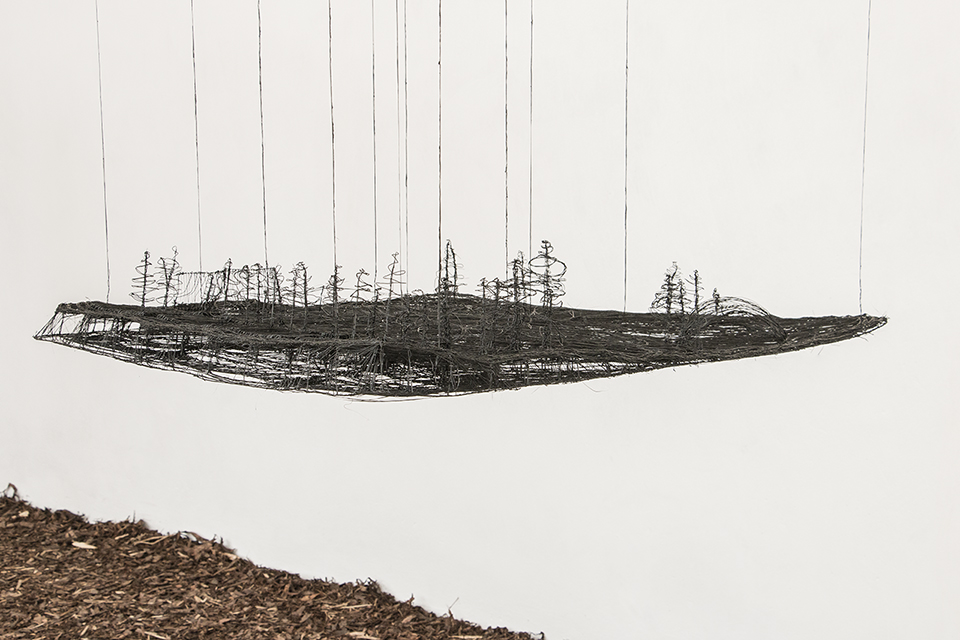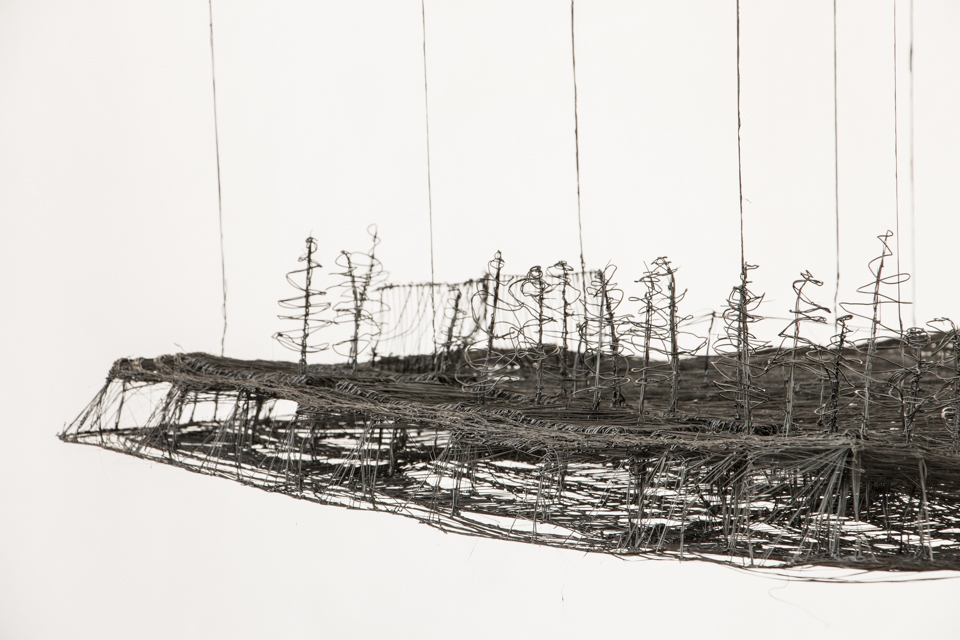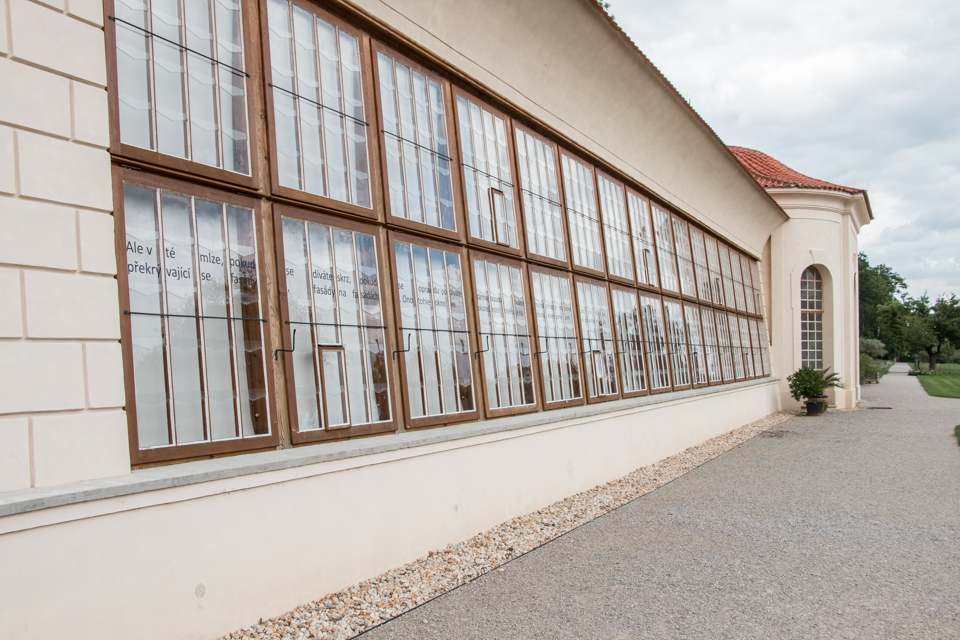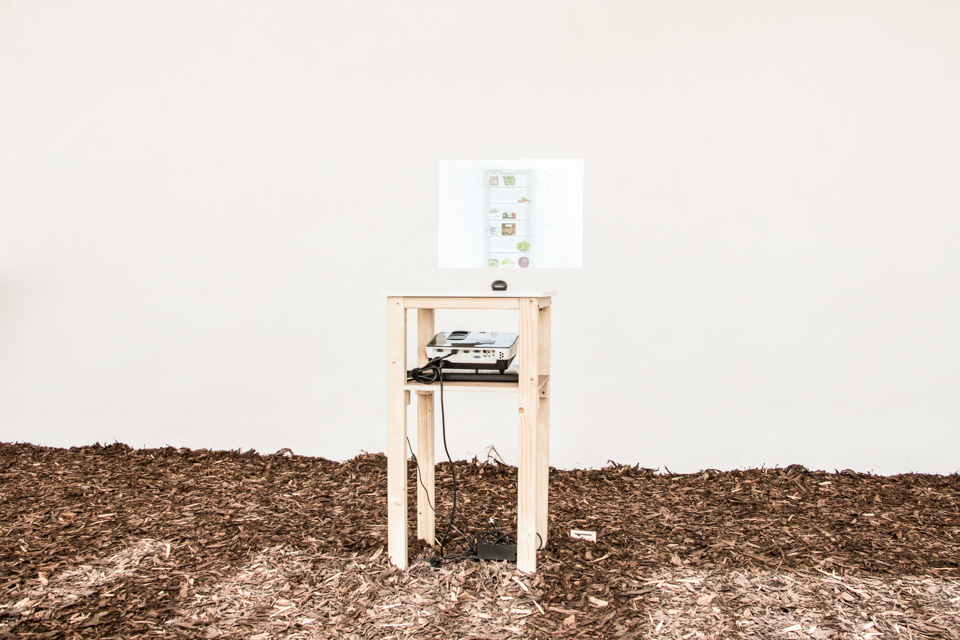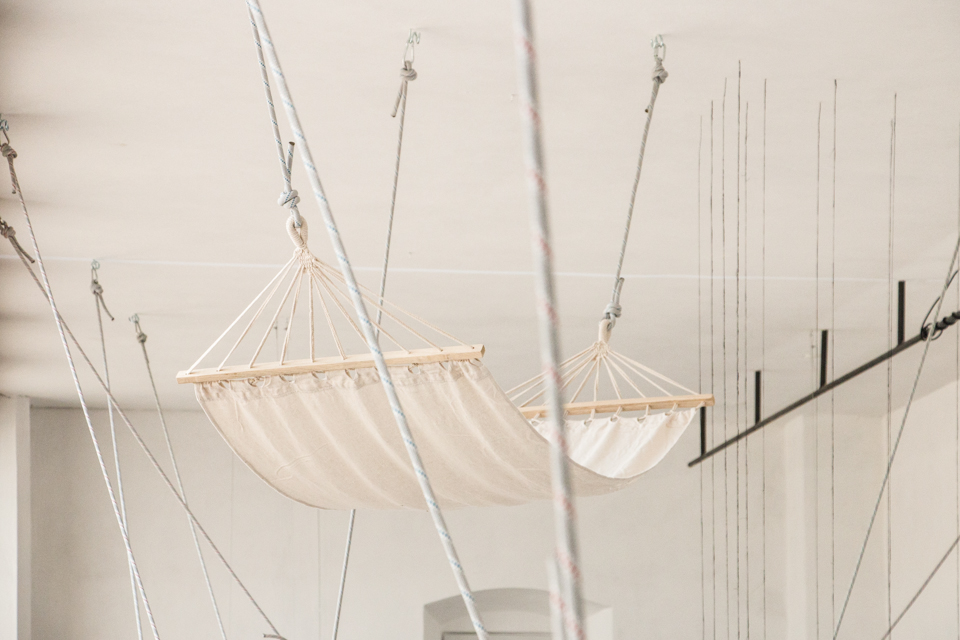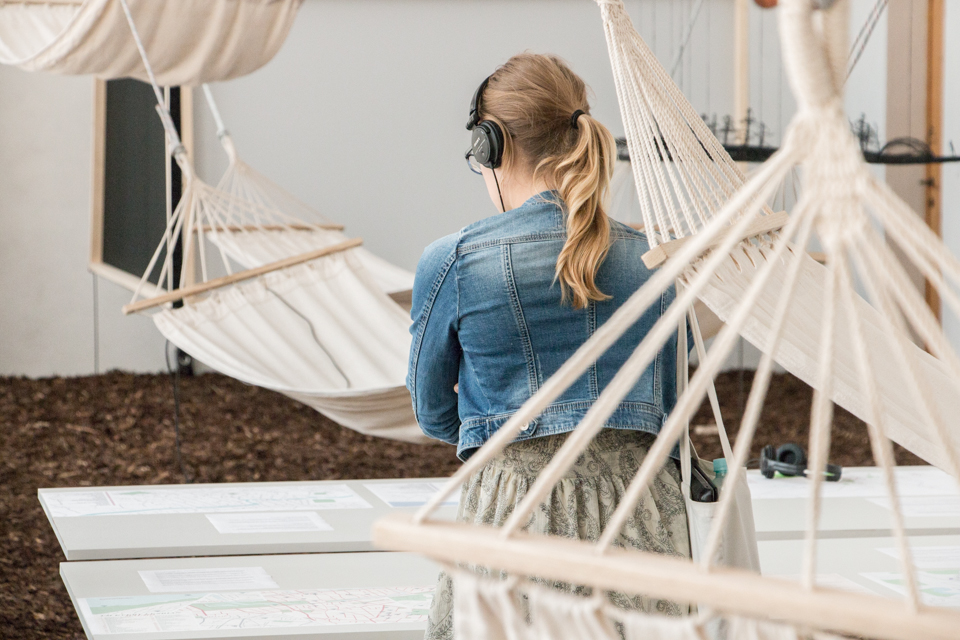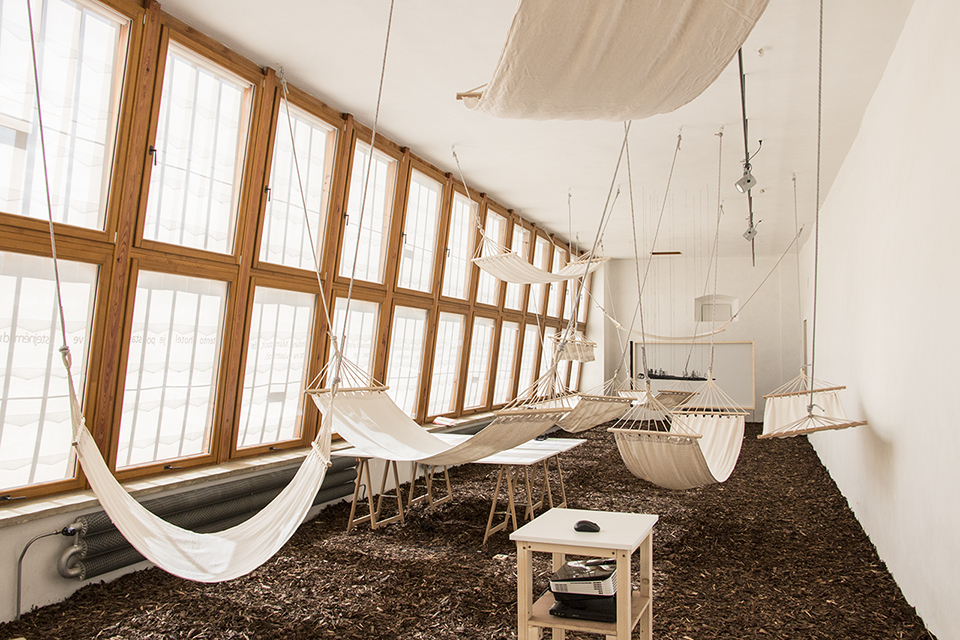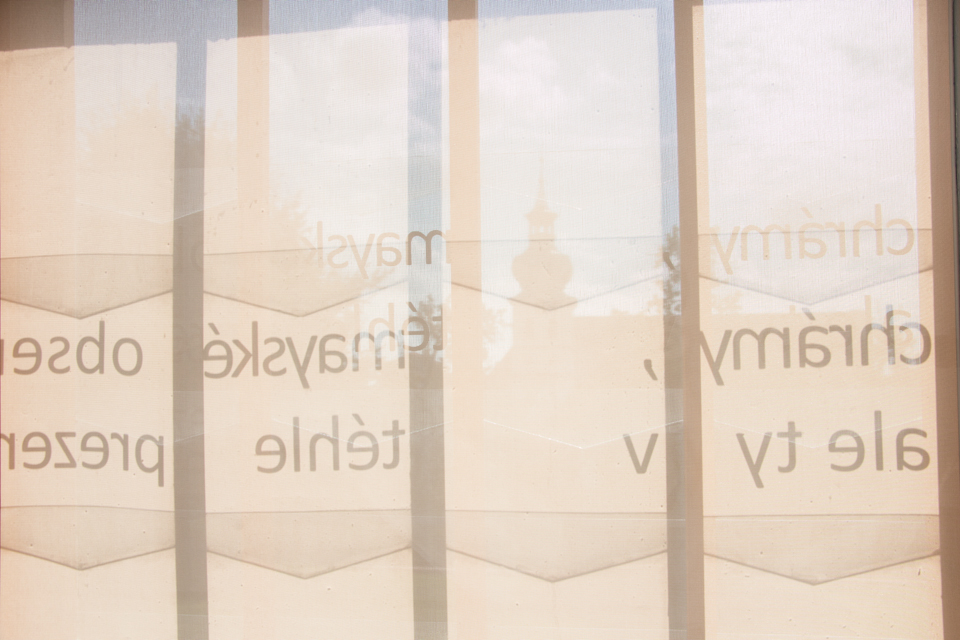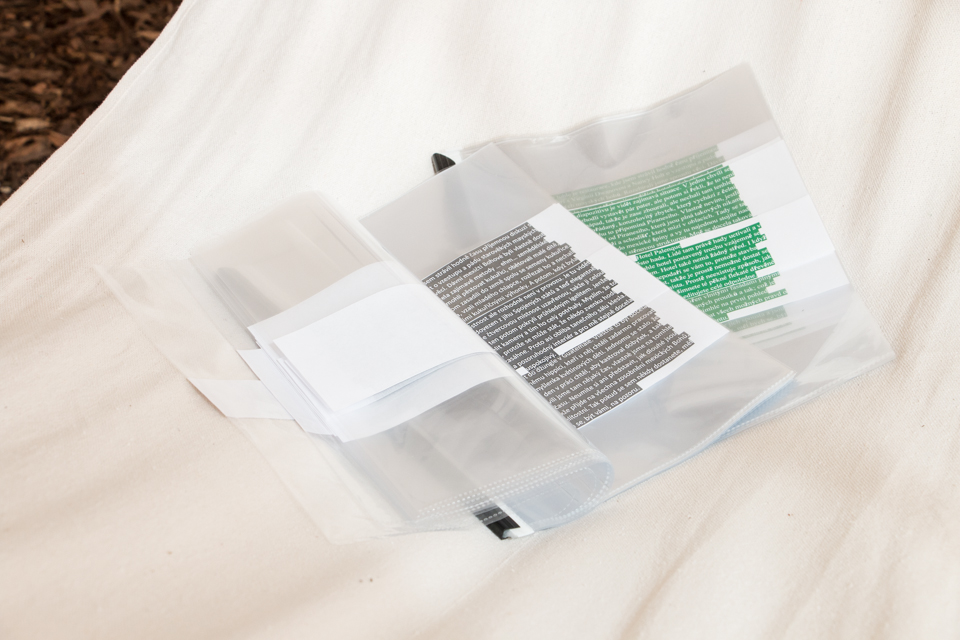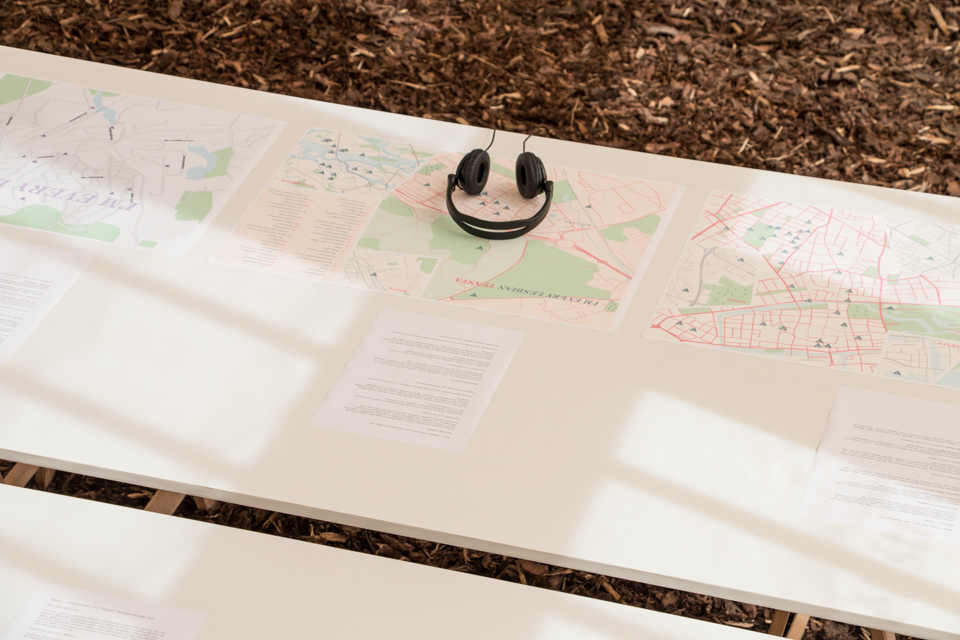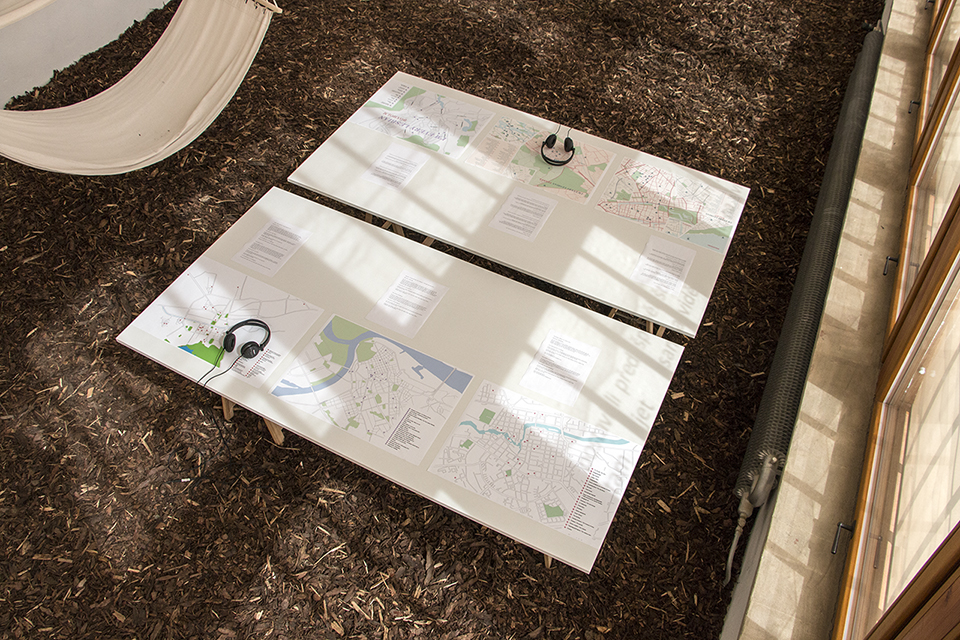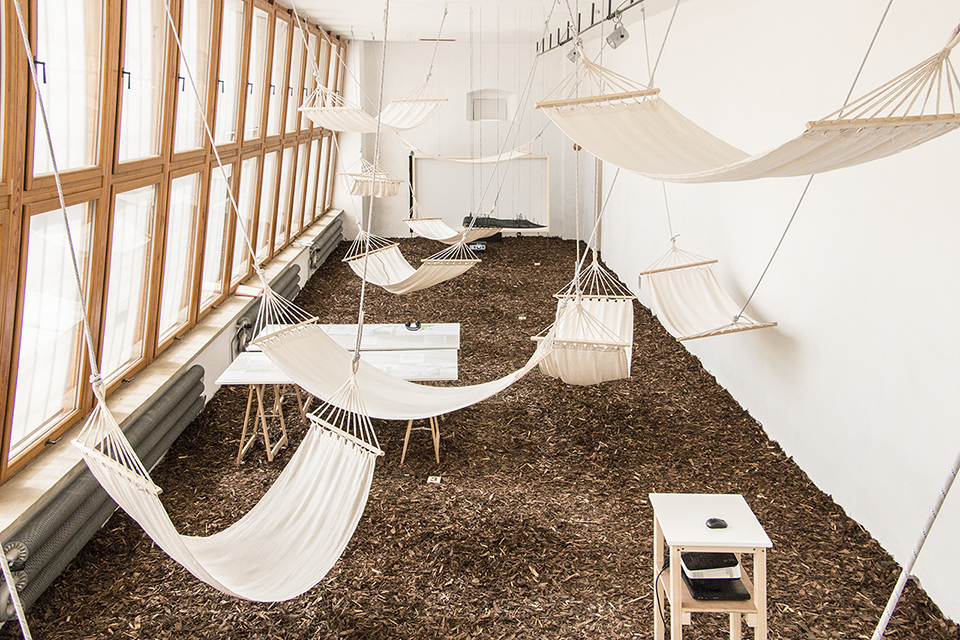Finding Neverland
L. Drussel-Martzolf, M. Hrubý, S. Hultin, L. Janušková, R. Samohejl, S. Storihle
19.08. – 13.09.15
curated by / Rado Ištok and Tereza Jindrová
The exhibition Finding Neverland is presenting works sharing an interest in places that fall outside of the predominant
environment, thanks to which they allow for creation or preservation of those thoughts, activities or communities which resist the
prevalent structures. Such places include the orangery itself (half of which today accomodates a gallery) or the premises of the
monastery. Entrance Gallery provides – similarly to many other independent galleries in Prague or elsewhere – space for young
artists, who are, more or less, at the beginning of their creative journey and who thus need backing and support as well as the
possibility to experiment. In similar manner the monastery and the orangery offered protection against adverse weather
conditions or historic situations.
Similar places of difference, also known as heterotopias, were discussed by the philosopher Michel Foucault in his lecture
Of Other Spaces (Des espaces autres, 1967). Today, Foucault’s theoretical analysis of heterotopias is followed e.g. by David
Harvey or Michiel Dehaene and Lieven De Cauter, who continue stressing their political significance. The most important feature
of heterotopias is their ability to resist the pressure of the socio-political or other norms and thus provide a resort against violent
homogenisation that keeps threatening t h e islands of difference – whether in authoritarian or neoliberal societies. Heterotopias
work as places where one can find refuge, practise temporary separatism or dedicate time to research and reflection instead
of permanent production. These “other spaces” (or periods) can be physical as well as mental and they are characterised more by
being exceptions rather than overall utopias. Unlike those, heterotopias are not universal and they are closer in their nature to
semi-public paradises or retreats.
The exhibiting artists show in their works that heterotopias can be found almost anywhere. In an extreme climate of a rain forest
or a desert, as well as in the outskirts of suburbs and housing estates, in a comfortable hotel or a summer residence of a head of
state, in the atmosphere of the decay of Mayan ruins or just common groceries, in an unrealized adaptation of an everyday square
in front of a school or in a dream colony of a sexual minority. Martin Hrubý and Sille Storihle both work with the troublsome history
of the second half of the twentieth century and in their films they show that heterotopias are often only a paradise for the chosen
few, while the others are banished behind its gates. Sofia Hultin and Lenka Janušková bring into the gallery – in their own ways –
the body of their long-term research based on their common interest in grasping the mental spaces within the public space. Loïc
Drussel-Martzolf and Rudolf Samohejl, who also designed the environment of the exhibition, both show fascination by entropy,
which reminds us that even heterotopias usually represent only temporary “here and now” or “there and then”.
The title of the exhibition employs the fairy tale-like metaphor of “Neverland”, for which searching is crucial. The exhibition
as such is epitomised in searching. Heterotopias may be experienced in places which we never gain access to, but also in places of
hidden meanings which we pass by every day without ever giving them a deeper thought. Some are a thing of the past, some others
will only be preserved in mind, while others are hiding nearby, where the germs, small seeds, may germinate tomorrow. Yet we can
start searching for them today.

